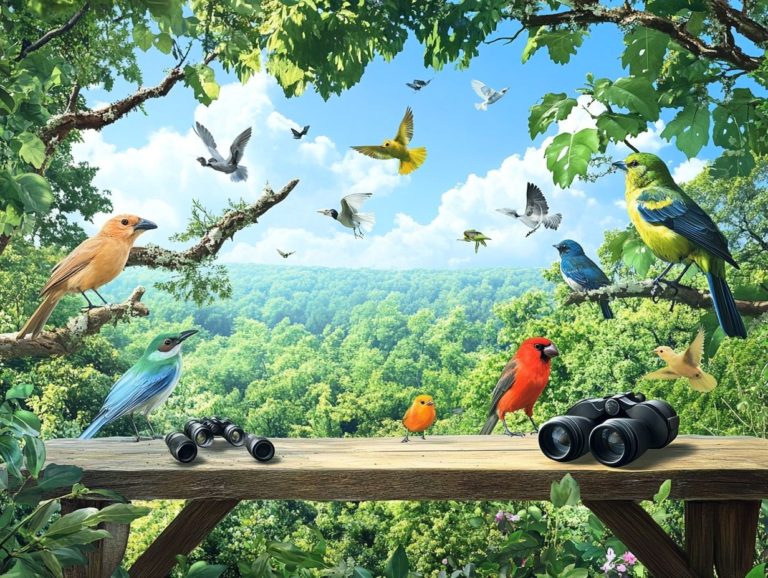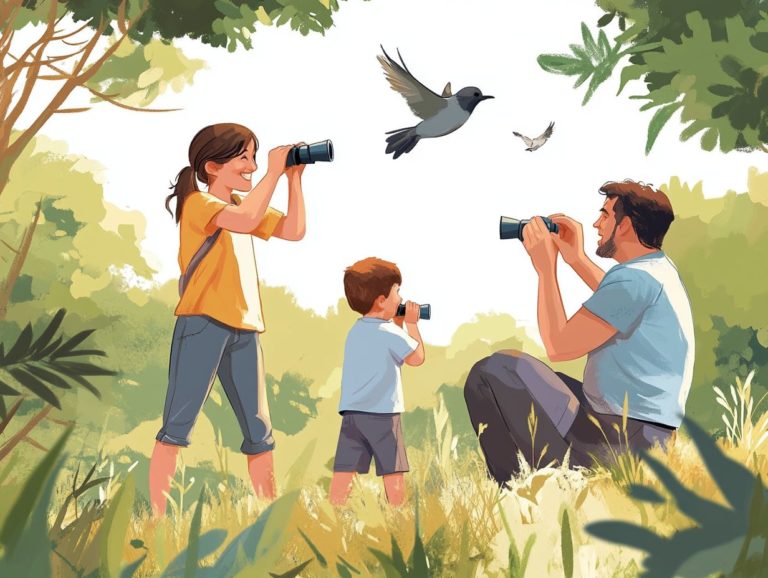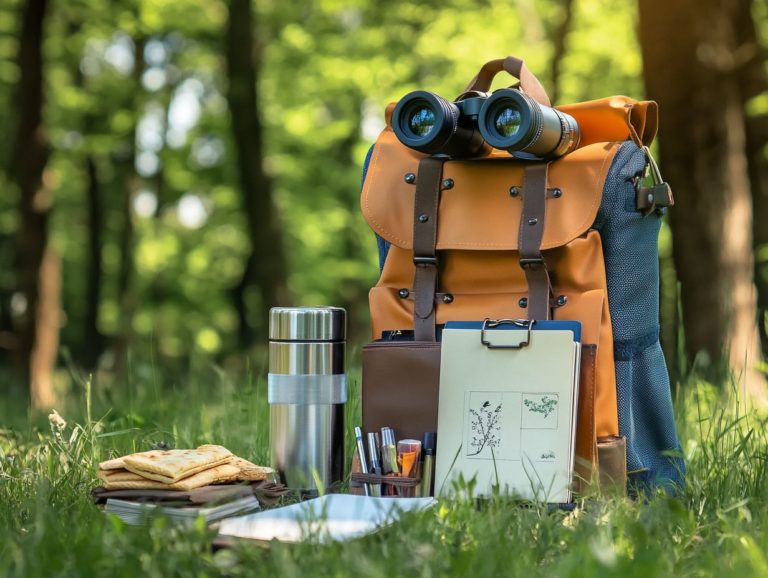How Does Weather Affect Bird Watching?
Bird watching is as much about timing as it is about technique, and the weather plays a crucial role in your experience.
From the vibrant flocks that grace sunny days to the intriguing behaviors of birds during storms, understanding weather patterns significantly enhances your observations.
This article explores how various weather conditions influence bird behavior and identifies the best times and seasons for bird watching.
Whether you re a seasoned birder or just beginning your journey, being well-prepared can elevate your outdoor adventures. Dive in to discover how to maximize your bird watching experience, whether you’re tracking migrants or enjoying the songs of winter birds, regardless of what the forecast holds!
Contents
- Key Takeaways:
- The Importance of Weather in Bird Watching
- Best Weather Conditions for Bird Watching
- Weather-Related Challenges in Bird Watching
- How to Prepare for Different Weather Scenarios
- Essential Gear and Tips
- Maximizing Your Bird Watching Experience in Any Weather
- Adapting and Making the Most of Your Trip
- Frequently Asked Questions
- How Does Weather Affect Bird Watching?
- What are the best weather conditions for bird watching?
- How does rain affect bird watching?
- Does the time of day affect bird watching?
- What precautions should be taken when bird watching in extreme weather?
- Can bird behavior change due to weather conditions?
- How can I prepare for varying weather conditions when bird watching?
Key Takeaways:
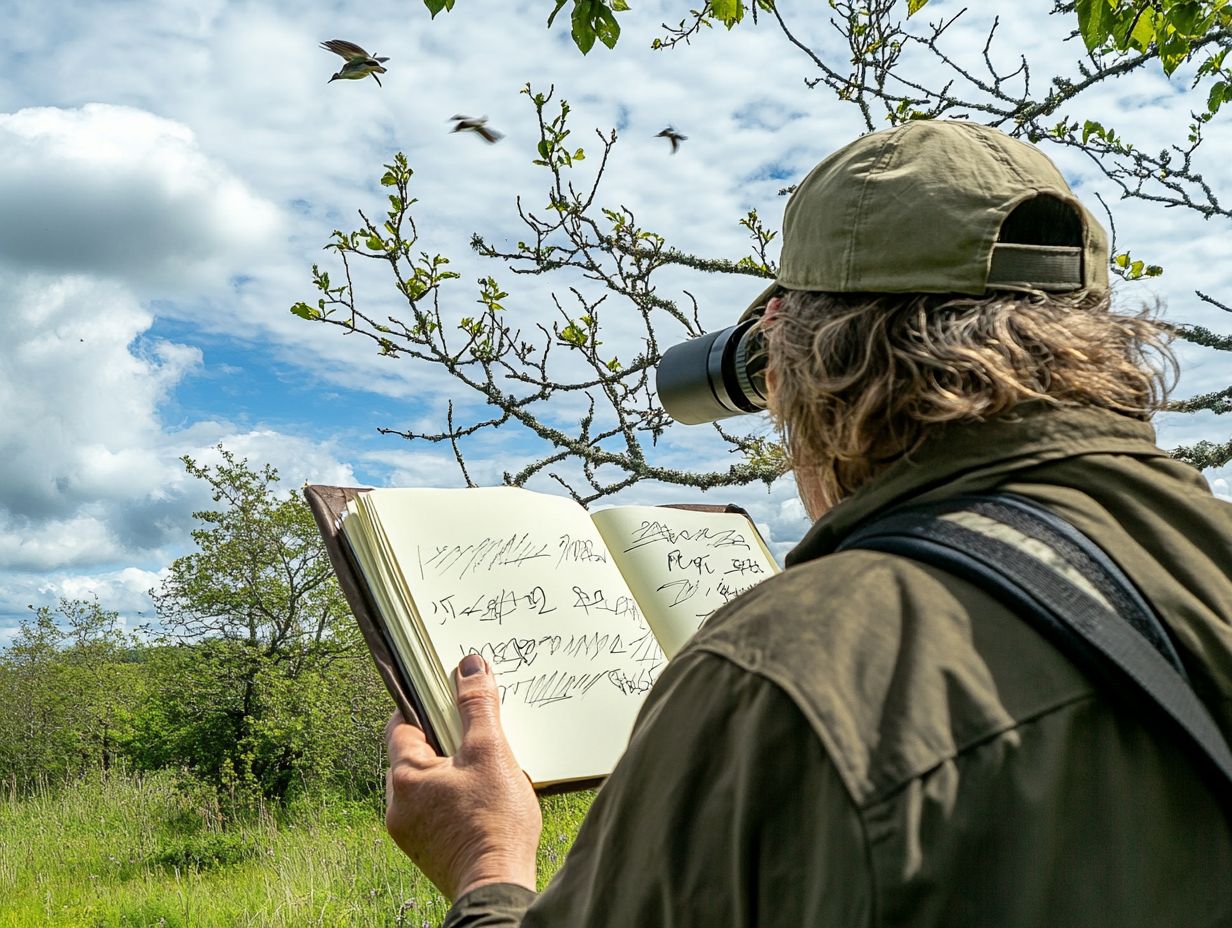
- Weather plays a crucial role in bird watching, affecting bird behavior and visibility.
- The best weather conditions for bird watching are during the early morning and late afternoon, with spring and autumn being the optimal seasons for observing ducks and gulls.
- Weather-related challenges such as rain and wind can be overcome by having the right gear and being adaptable in your approach.
The Importance of Weather in Bird Watching
Understanding the significance of weather in bird watching is essential for elevating your experience and success as a birder. Different weather conditions, such as temperature shifts and changes in air pressure, can greatly influence bird behavior, migration patterns, and even the species you might encounter in various habitats. Air pressure is the weight of the air around us, which can affect bird behavior.
Take, for instance, the spring and autumn migrations that draw thousands of birds to specific areas like California. Here, the combination of wind and rain creates perfect conditions for spotting a rich variety of species, including ducks and gulls.
Keep these factors in mind to elevate your outings and fully immerse yourself in the beauty of bird songs while observing a diverse array of birds in their natural environments.
How Weather Impacts Bird Behavior
Weather significantly influences bird behavior, shaping everything from their feeding habits to migration patterns and energy levels.
When high-pressure systems move in, typically bringing clear skies and calm conditions, you ll notice an uptick in bird activity. These ideal circumstances create the perfect backdrop for foraging and movement.
On the flip side, low-pressure systems, often heralding rain or storms, can throw a wrench into the mix. Birds are compelled to seek shelter and conserve energy, adjusting their activities accordingly.
Consider species like swallows that depend on favorable weather to time their migrations. As spring approaches, rising temperatures and stabilizing pressures signal it s time to move, prompting geese and others to embark on long journeys.
Similarly, songbirds may alter their feeding strategies with the changing seasons, optimizing their energy use during migration periods to ensure their travels are successful.
Best Weather Conditions for Bird Watching
Finding the best weather for bird watching can boost your chances of spotting a variety of species, including ducks, gulls, and various migrants. Generally, mild temperatures with minimal wind and low precipitation create the ideal environment, as many birds tend to be more active and visible under these conditions.
For instance, spring and autumn often present exceptional opportunities for spotting migratory birds on their journeys between breeding and wintering grounds. Understanding how seasonal variations impact bird activity can help you optimize your birding experiences.
Don’t miss the chance to see unique migratory birds during these critical seasons!
Optimal Time of Day and Season
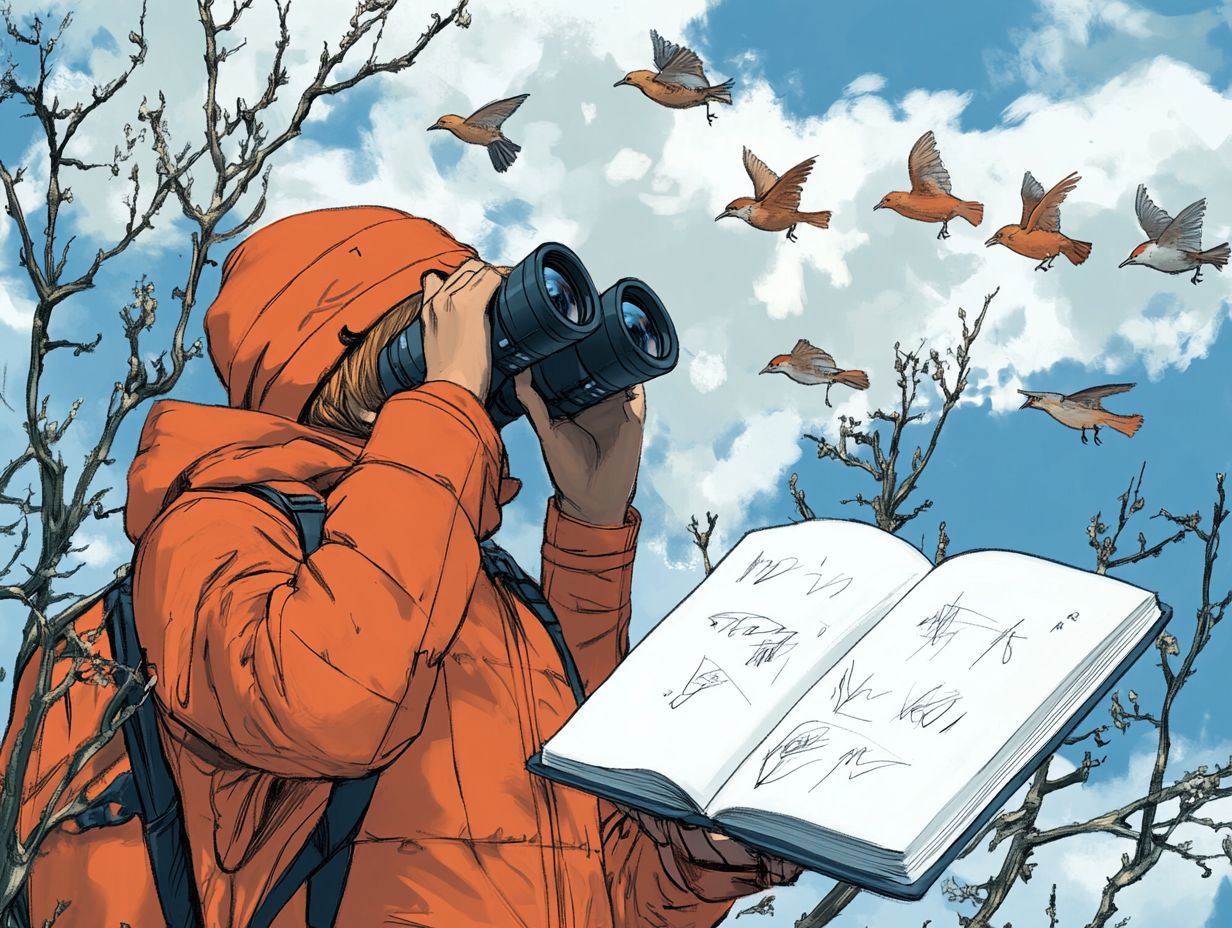
Bird watching is best in the early dawn and late afternoon. This is when birds are most active.
Cool air during these times encourages many species to forage for food. You ll find their energy levels peaking as they prepare for the day ahead or winding down as the sun begins to set.
In spring and autumn, these timeframes align beautifully with migration seasons, which are times when birds travel to different areas for breeding or food. This presents the chance to encounter a stunning variety of both resident and migratory birds.
For instance, in the spring, if you rise early, you might spot warblers and thrushes replenishing their energy after long journeys. In the fall, the late-afternoon light casts a magical glow on flocks returning south, creating an enchanting experience for you as an enthusiast.
Weather-Related Challenges in Bird Watching
Weather-related challenges in birdwatching can pose significant hurdles, even for the most devoted enthusiasts. Prepare for rain, wind, and temperature extremes.
For example, heavy rain can obscure your view and diminish bird activity. Strong winds may disrupt migration patterns and sap the birds’ energy. Cold weather often drives many species into hiding, whereas warmer conditions might prompt others to be more lively and visible. Understanding the challenges of bird watching can help you prepare for these conditions.
Understand these challenges to adapt your strategies and boost your birdwatching experience. Cold weather or unexpected rain won’t keep you from enjoying nature!
Dealing with Rain, Wind, and Other Factors
Dealing with rain, wind, and other environmental factors can feel overwhelming for bird watchers. But with the right strategies, you can still relish your time in the field, especially when equipped with robust, weather-resistant binoculars.
Invest in high-quality gear that keeps you protected from the elements think waterproof clothing and robust, weather-resistant binoculars. You can confidently navigate even the most challenging conditions.
Seeking refuge in places like dense forests or near tranquil water bodies can offer a welcome break from harsh elements while still presenting excellent bird-watching opportunities.
It’s also vital to recognize that certain species might become more active during inclement weather. For instance, many birds tend to forage more frequently when there’s light rain. Understanding these behavioral nuances can elevate your experience and unveil unexpected chances for observation, turning what initially appears to be unfavorable conditions into truly rewarding adventures.
How to Prepare for Different Weather Scenarios
Preparing for various weather scenarios is essential for any bird watcher. It allows you to stay comfortable while enhancing your chances of spotting magnificent species like the Great Horned Owl or Bald Eagles.
By investing in high-quality gear that shields you from the elements whether it s biting cold or unexpected rain you can keep your focus on the joy of birding rather than your discomfort, allowing you to enjoy nature at its fullest.
Understanding which habitats thrive in certain weather will enhance your birding experience. A warm jacket, waterproof binoculars, and strategically placed bird feeders can make all the difference, enabling you to adapt to changing weather with effortless grace.
Essential Gear and Tips
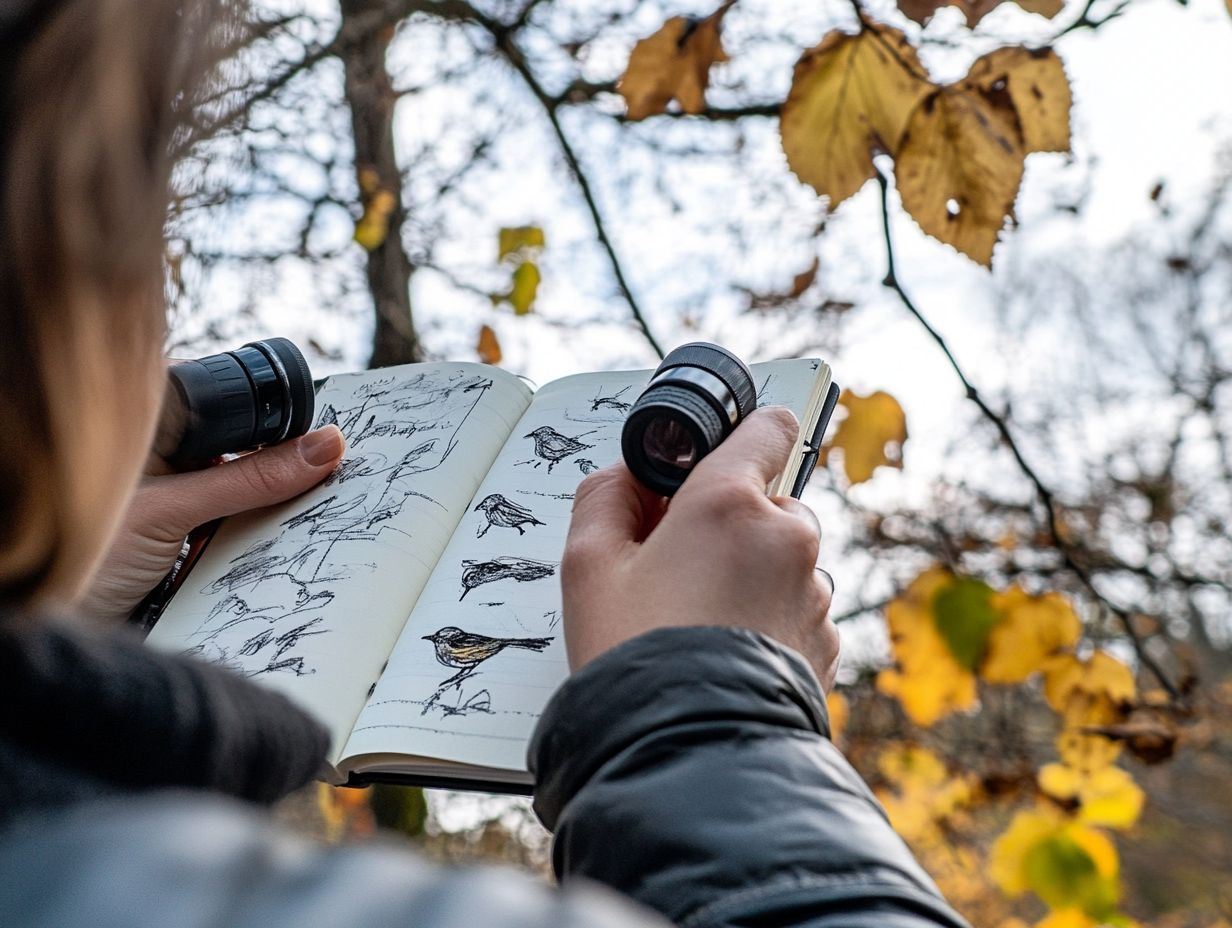
Essential gear for your birdwatching adventures depends on the weather, but there are must-haves that you cannot overlook. A portable bird call app can attract curious birds, while waterproof binoculars and field guides are essential. Don’t forget appropriate clothing tailored to the conditions.
On sunny days, wearing a wide-brimmed hat and polarized sunglasses helps reduce glare and protects your eyes, making it easier to spot distant birds. If rain joins your outing, a durable raincoat and quick-dry pants will keep you dry so you can focus on identifying species without discomfort.
A comfortable pair of sturdy hiking boots is non-negotiable. They provide the traction and support needed on various terrains. Bring along a lightweight backpack for snacks, water, and your portable bird call app. This can enhance your overall experience!
Maximizing Your Bird Watching Experience in Any Weather
To truly maximize your bird watching experience, you must embrace adaptability and take action to understand your environment.
Adapting and Making the Most of Your Trip
Adapting to the weather during your birdwatching trip can enhance your experience and lead to unique sightings. By staying attuned to shifting weather patterns, you can adjust your plans and explore varied habitats that attract different species.
For instance, rainy days can draw migratory birds, offering a rare chance to observe them closely. Embracing this flexibility opens the door to discovering new locations where certain birds may be particularly active.
Keep an eye on local forecasts for an exciting birdwatching adventure! Understanding how weather influences bird behavior can significantly enrich your journey, transforming it into a rewarding and exhilarating experience.
Frequently Asked Questions
How Does Weather Affect Bird Watching?
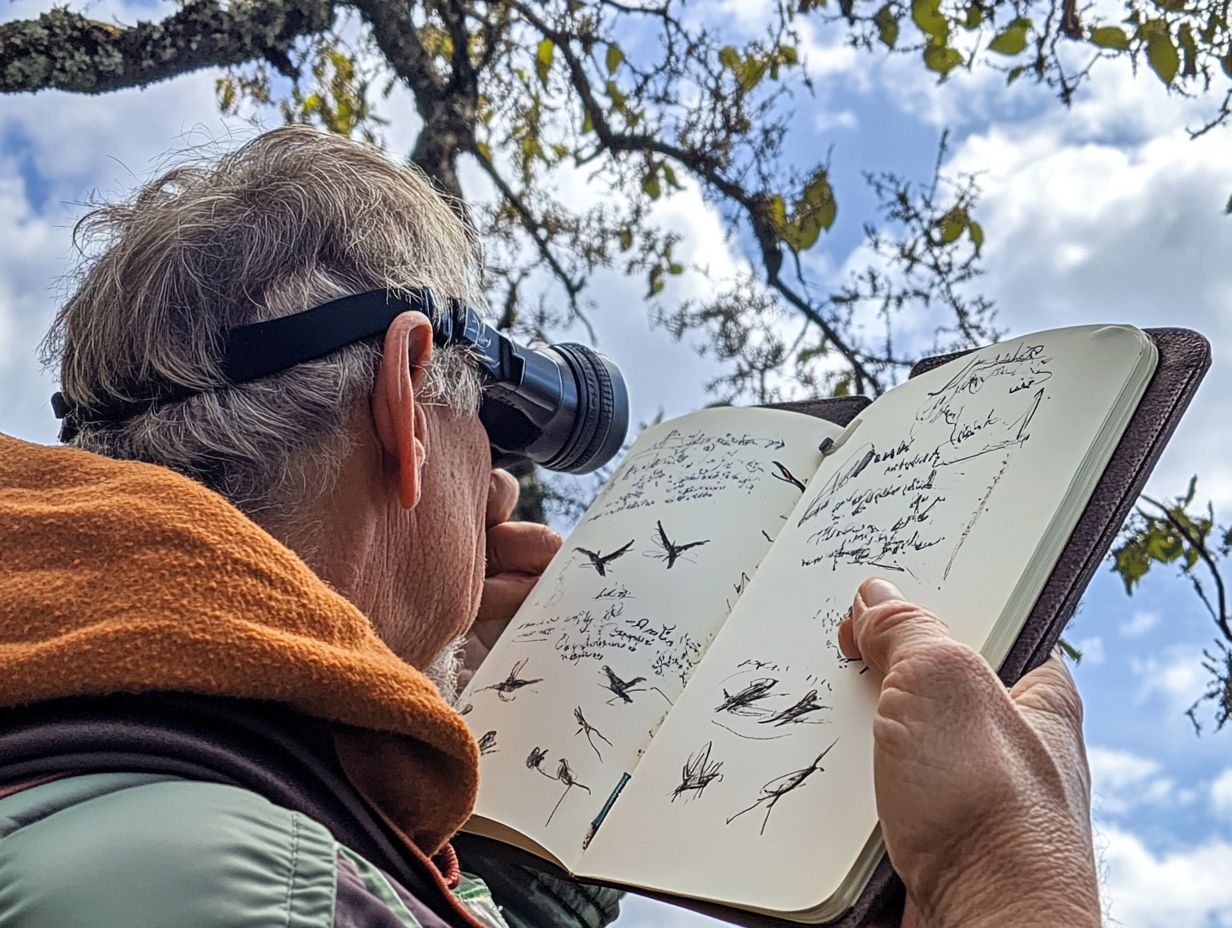
Weather can significantly impact bird watching. To ensure you’re ready for any conditions, check out this guide on how to prepare for bird watching in extreme weather. Here are some common questions about how it affects this activity.
What are the best weather conditions for bird watching?
Mild and calm weather is ideal for bird watching, but understanding the impact of weather on bird photography can help you adapt to extreme conditions like heavy rain, strong winds, or extreme heat, which can make it difficult to spot and observe birds.
How does rain affect bird watching?
Rain can have positive and negative effects on bird watching. It may reduce visibility and sheltering behaviors, but it can also bring out unique bird species seeking shelter and food.
Does the time of day affect bird watching?
Yes, the time of day significantly impacts bird watching. Early morning and late afternoon tend to be the best times to observe birds as they are most active during these periods.
What precautions should be taken when bird watching in extreme weather?
If you plan to go bird watching in extreme weather, take proper precautions to ensure your safety and that of the birds. This includes wearing appropriate clothing, using protective gear, and knowing when to call off the activity.
Can bird behavior change due to weather conditions?
Yes, bird behavior can be greatly influenced by weather. For example, during periods of rain, birds may become more active as they search for food and shelter. In contrast, in hot and dry conditions, they may conserve energy and hide in shaded areas.
How can I prepare for varying weather conditions when bird watching?
To prepare for varying weather conditions, check the weather forecast beforehand and dress accordingly. Bring along necessary items like sunscreen, insect repellent, and rain gear to ensure a comfortable and enjoyable experience.
Do you have any birdwatching experiences or tips to share? Join the conversation in the comments below!

